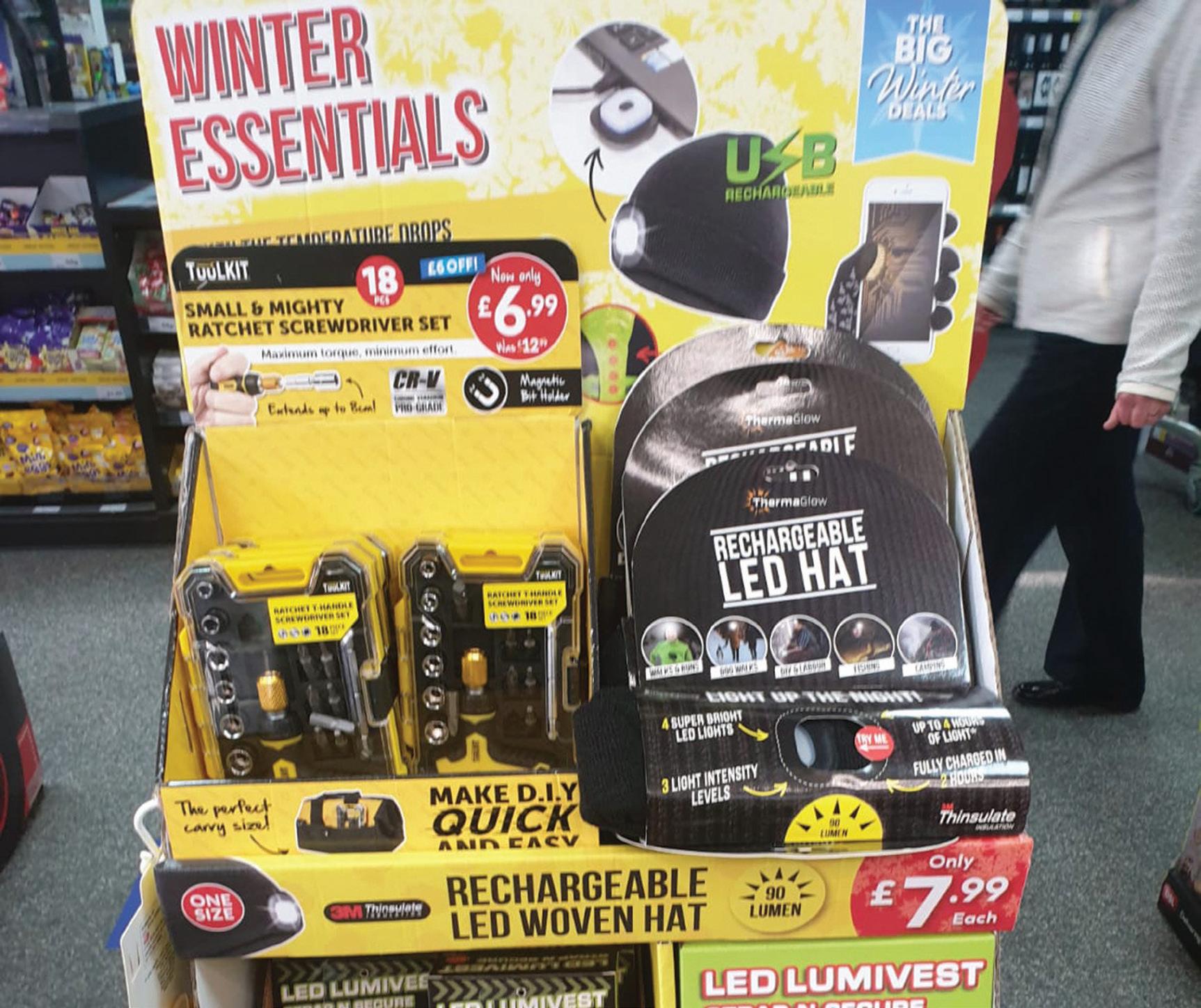
2 minute read
STORE ADVICE
Diversify with sale or return
Aman Uppal has widened his product range near the counter with products from DSL Group. He partnered with them in September 2022 and now receives a range of different products that change every month, have a long shelf life and are sale or return, meaning if he’s not able to sell them, he doesn’t have to pay for them.
“Sale or return is massive and you get a bit of credit with them as well,” he says. “You get all sorts of products – pet blankets and toys, JCB-branded tools, winter essentials, Christmas LED candles and DIY hardware products. It’s a bit like the central aisle in Aldi, and disrupts the customer journey. People are now starting to get used to looking at what’s on the stands.”

Since introducing the products, Uppal has achieved additional sales equivalent to £3,000 extra going through the till each year.
Team up to reduce energy bills
With energy bills so high, Ricky Dougall, from Nisa Millennium View in Coventry, looked into solar panels, but didn’t have the roof space to install them. So, after asking other businesses for energy-bill advice, he joined a consortium of 120 companies that buy their energy together as part of a larger basket.
“I was speaking to people and they told me they were part of a group and asked whether I’d like to join. Rather than paying 50p a unit, we’re buying energy together with these other companies and we’re paying 25p a unit instead,” he says. “It’s what big companies do, because they buy so much, they get bulk rates.”
Even with a commission payment paid by the consortium, the saving is equivalent to £19,473 per year, based on the ACS’s average convenience store energy consumption figures.
Better target your leaflets
For Colin Savage, from Baxters Newsagents in Milngavie, East Dunbartonshire, a book of vouchers for newspaper deliveries is guaranteed income for three months, with a year subscription to the Telegraph, for example, bringing in £1,248.
For many stores like Savage’s, leaflet drops are an existing cost, but by working with a company that can target the right doorsteps, he minimises cost and maximises impact.

“We’re offering 18 different runs for newspaper deliveries, but some of them were getting a bit small, so we need to target certain other areas with these leaflets. He comes with a map and we agree an area with a highlighter.
“Even if we get one customers from that leaflet drop, it pays for itself, but you’ll always get more down the line because you’re always reminding people you’re there,” he says. “Your target demographic can be forgetful.”
Reduce freezer use
The biggest cost increase at Varsha Pankhania’s Nisa Local store in Paddington, central London, is in electricity.
She has little room for experimentation with layout, so her focus is on increased energy efficiency.
Her chillers are built in with a condenser on the roof, so they can’t be switched off at night. “We’ve had to cut back on usage,” she says. “We’ve got non-perishable chillers for products such as wine, so we thought there was no need to have them at 4°C – we’ll have them at 8°C instead.
“We’ve also had all our meters changed to smart meters, so we’re never behind on bills, which helps manage cash flow.”
Meanwhile, at her family’s wine shop down the street, some chillers with take-home products like champagne have been turned off. Having made these changes six weeks ago, she plans to check the results every three months to make sure sales aren’t affected. l








